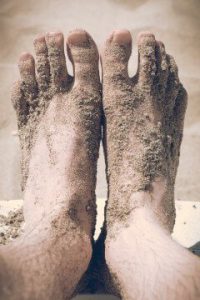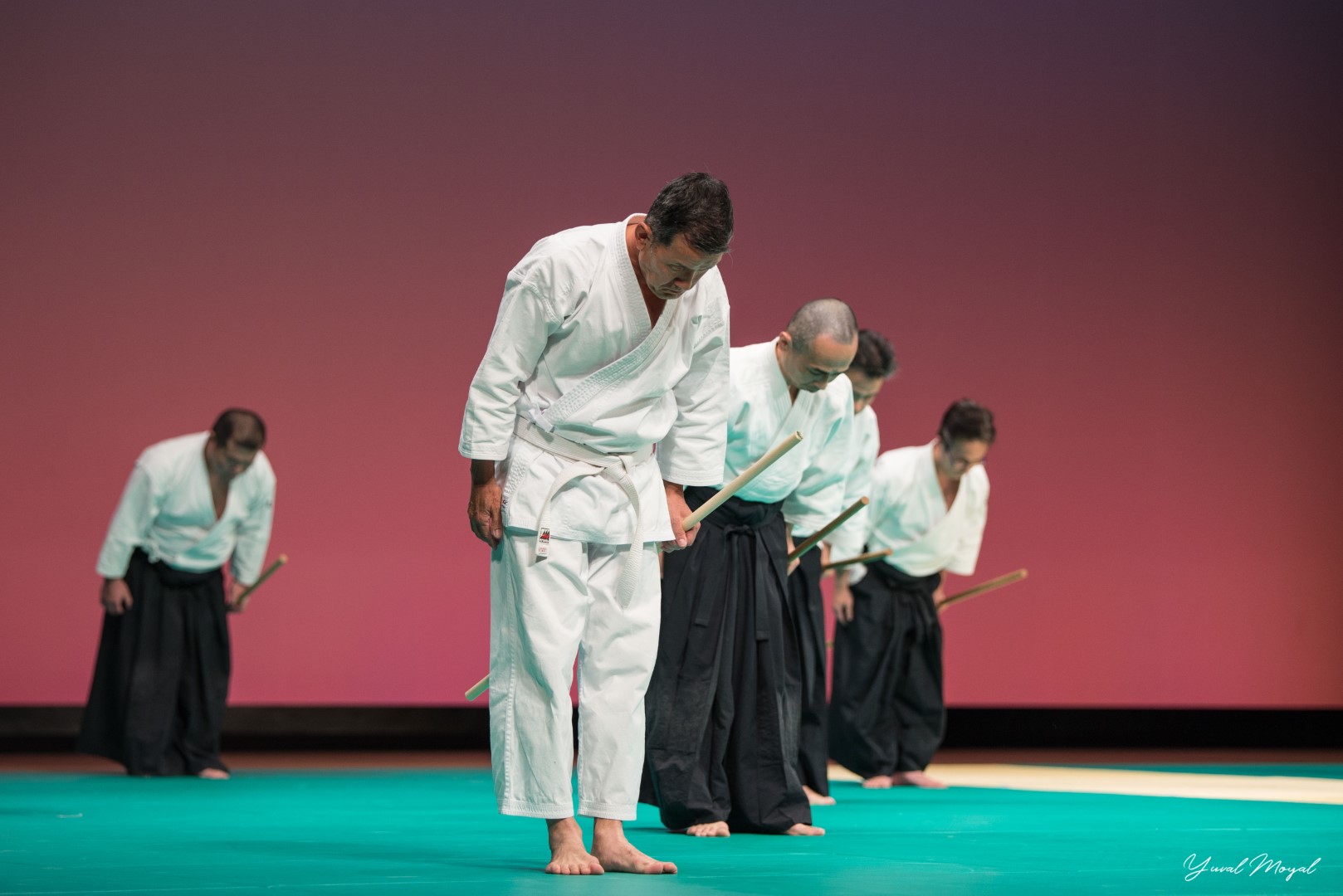Falling down is part of our everyday life. People lose their balance all the time, not only in Aikido practice: It may happen while walking in the street, riding a bicycle and everywhere. Instead of being afraid of falling, in place of the "falling" being "a scary incident", "the end of the word", one can practice falling in lab conditions and learn how to fall correctly. Then, if it happens and one might experience a fall in "real life", that will be a familiar event and one may know that it is possible to stand up straight away. The majority of adult trainees that start Aikido, had not rolled since their childhood, and find rolling somewhat disturbing. First of all it is about losing one's balance, and even loss of control!! And we all want to always be in control.
With practice, rolling becomes more of a routine, where we learn the limits of our balance, and when we lose balance, we simply roll. We learn to encounter the ground smoothly without being injured. The loss of balance and the following fall become- something familiar.
In my opinion, a similar concept is applicable when educating children. One of the greatest assets one can give to a child is the understanding that error is permitted. It is allowed to stumble. They have to be taught that everyone makes mistakes, and falling down is part of life. The most important thing is to fall correctly without being injured, and then get up again, stand on ones feet and continue onwards. One must not get stuck in his fall.
In one of my talks with a Dojo member, he mentioned that the level of "not being afraid from rolling" is a good one, but a higher level is the one of "enjoying the fall". He added "Any way you fall, so instead of stiffening (and getting hurt), it is better to accept the fact of falling down, try to remain soft, and try to enjoy the act of falling. If I succeed, I can exit of the fall in any direction I choose, all the options are open to me".
The basic principle of "practicing loss of balance situations" is good and important: To children, adults and more mature grown-ups. It is common knowledge that a fall of an elderly person might be disastrous. Sometimes an active and energetic person becomes handicapped and even worse. I believe that some injuries come out of fear. Practicing falling down is an excellent way to be freed from the fear, that sometimes is what brings us the tragedy ("I got what I was afraid of"). In Aikido, instead of being afraid of falling down, we understand that this is part of life, and we try to do it right.
Some important points in practicing falling:
- Practice situations of losing our balance and know our balance limitations.
- During the fall, to protect the most important parts: Head, neck and spine.
- To recruit the energy of the fall, and use the same energy to get up straight away. It is important to get up immediately. Do not get stuck in the fall.
- After getting up, turn around and find out what had caused the fall.
All these points, that are relevant to Aikido "falls", can be translated to everyday life, and instead of talking about the "physical fall" one can talk about "falling in business" or "mistakes" or "falls" in any other area of our lives.









